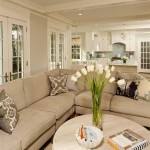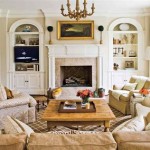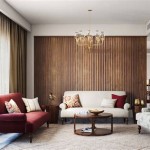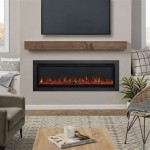Decorative Tables for Living Rooms: A Comprehensive Guide
The living room serves as a central gathering space within a home, reflecting the inhabitants' personality and lifestyle. Within this space, the decorative table assumes a significant role, functioning both practically and aesthetically. These tables offer surfaces for placing items like beverages, books, and remote controls, while simultaneously contributing to the overall design scheme of the room. The selection of a decorative table is not merely utilitarian; it’s a design decision that impacts the ambiance and cohesiveness of the living room.
This article will explore the various types of decorative tables available for living rooms, focusing on key considerations for selecting the right table to complement existing décor and meet specific functional needs. We will examine aspects such as table styles, materials, size and placement, and decorative considerations to enhance the living room's overall aesthetic appeal.
Types of Decorative Tables
The market offers a diverse range of decorative tables, each distinguished by its design, function, and the aesthetic it brings to the living room. Categorizing these tables helps in understanding their individual strengths and suitability for different living room styles and needs.
Coffee Tables: Perhaps the most ubiquitous type of living room table, the coffee table is typically positioned in front of a sofa or seating area. Its primary function is to provide a surface for drinks, snacks, reading materials, and decorative items. Coffee tables come in various shapes, including rectangular, square, round, and oval. The material palette is extensive, ranging from wood and glass to metal and stone. The style of a coffee table should align with the overall design of the living room. For example, a rustic living room might feature a wooden coffee table with a distressed finish, while a modern living room could utilize a sleek glass or metal coffee table.
End Tables: Also known as side tables, end tables are typically placed beside a sofa or armchair. Their purpose is to provide a convenient surface for lamps, books, drinks, or other personal items. End tables are typically smaller than coffee tables and often serve as accent pieces in the room's design scheme. The height of an end table is crucial; it should be roughly level with the arm of the adjacent seating to ensure easy access to items placed on it. End tables are available in a wide array of styles, from traditional to contemporary, and can be chosen to complement or contrast with the coffee table and other furniture in the room. A set of matching end tables can create a sense of symmetry and balance within the living room.
Console Tables: Console tables are long, narrow tables typically placed against a wall. They are versatile pieces that can serve several purposes in the living room. They can be used to display decorative objects, such as vases, sculptures, or framed artwork. Console tables also provide a surface for placing lamps or serving as a makeshift bar area. In entryways or behind sofas, console tables can define a space and anchor the furniture layout. Some console tables feature drawers or shelves, providing additional storage space for items like keys, mail, or magazines. The style of a console table should complement the overall design of the living room and can be chosen to add visual interest and depth to the space.
Ottomans:While not strictly tables in the traditional sense, ottomans can effectively function as tables, especially when paired with a tray. They offer a comfortable place to rest feet while providing a surface for placing drinks or books. Ottomans are available in various shapes, sizes, and materials, and can be easily moved around the living room to accommodate different seating arrangements. Leather ottomans offer a classic and durable option, while upholstered ottomans provide a softer and more luxurious feel. Some ottomans even feature hidden storage compartments, making them a practical choice for small living rooms.
Nesting Tables:Nesting tables consist of a set of two or three small tables that fit one inside the other. They offer a flexible and space-saving solution for living rooms. When not in use, the tables can be nested together to save space. When needed, they can be pulled out and used as individual end tables or coffee tables. Nesting tables are a versatile option for entertaining guests or providing extra surface space when needed. They are available in various styles and materials, and can be chosen to complement the overall design of the living room. Nesting tables are particularly useful in smaller living rooms where space is at a premium.
Key Considerations for Selecting a Decorative Table
Choosing the right decorative table for the living room involves careful consideration of several factors to ensure that the table is both aesthetically pleasing and functionally appropriate. Ignoring these considerations can result in a table that clashes with the overall design or fails to meet the practical needs of the inhabitants.
Style and Design: The style of the decorative table should be consistent with the overall design aesthetic of the living room. A contemporary living room might feature a sleek, minimalist table with clean lines, while a traditional living room might benefit from a more ornate table with intricate details. The table's finish, color, and material should also complement the existing furniture and décor. Consider the architectural style of the house as well. A mid-century modern home calls for different table designs than a Victorian-era house. Using a consistent approach ensures a cohesive look.
Size and Proportion: The size of the decorative table should be proportional to the size of the living room and the surrounding furniture. A large coffee table in a small living room can overwhelm the space, while a small end table next to a large sofa can look out of place. Measure the available space before selecting a table and consider the dimensions of the other furniture in the room. The height of the table is also important. A coffee table should be approximately the same height as the sofa cushions, while end tables should be roughly level with the arm of the adjacent seating. Proper size and proportion are crucial for creating a balanced and harmonious living room.
Material and Durability: The material of the decorative table should be chosen based on both aesthetic preferences and functional needs. Wood tables offer a classic and durable option, while glass tables can create a light and airy feel. Metal tables provide a modern and industrial look, while stone tables offer a natural and earthy feel. Consider the durability of the material, especially if the table will be used frequently. For example, a glass coffee table may be susceptible to scratches and fingerprints, while a wooden table may require regular polishing. Choose a material that is both visually appealing and able to withstand the wear and tear of daily use. The intended use case scenarios directly influence material choice.
Functionality: Consider how the decorative table will be used. If it will primarily serve as a surface for drinks and snacks, choose a table with a durable and easy-to-clean surface. If it will be used for displaying decorative objects, choose a table with an appropriate size and shape. If it will be used for storage, choose a table with drawers or shelves. Consider the specific needs of the inhabitants and choose a table that meets those needs. Functionality should never be sacrificed for aesthetics alone; the ideal table balances both.
Budget: Decorative tables are available at a wide range of price points. Establish a budget before beginning the search and stick to it. Consider the quality of the materials and construction when evaluating different options. A more expensive table may be a better investment in the long run if it is more durable and well-made. However, there are also many affordable options available that can still enhance the look of the living room. Research different retailers and compare prices to find the best value for the money.
Decorative Considerations for Enhancing Aesthetic Appeal
Beyond its functional role, a decorative table presents an opportunity to elevate the aesthetic appeal of the living room. Careful consideration of the table's design details and how it integrates with other decorative elements can create a more visually engaging and inviting space.
Table Styling: The way a table is styled can significantly impact the overall look of the living room. Avoid cluttering the table with too many items. Instead, choose a few carefully selected objects that complement the table's style and the room's décor. A stack of books, a decorative tray, a vase of flowers, or a sculptural object can all add visual interest to the table. Consider the arrangement of the objects as well. Grouping items in odd numbers can create a more visually appealing composition. Avoid placing items in a straight line or in a symmetrical arrangement. Instead, create a sense of balance and harmony by varying the heights and shapes of the objects. The style of the objects should also be consistent with the overall design aesthetic of the living room.
Lighting: The placement of lamps on or near a decorative table can significantly enhance the ambiance of the living room. A table lamp can provide task lighting for reading or writing, while also adding a warm and inviting glow to the room. The style of the lamp should complement the table's style and the room's décor. Consider the size and shape of the lamp as well. A large lamp can overwhelm a small table, while a small lamp may not provide enough light. The lampshade should also be chosen carefully to ensure that it diffuses the light properly and complements the room's color scheme. Sconces positioned above a console table can also create a dramatic effect, emphasizing decorative objects placed on the table.
Rugs and Textiles: The rug beneath a coffee table or the placement of throws and pillows near an end table can enhance the overall look of the living room. A rug can define the seating area and anchor the furniture layout. The color and pattern of the rug should complement the table's style and the room's décor. Throw pillows and blankets can add warmth and texture to the room. Choose fabrics that are both comfortable and visually appealing. The colors and patterns of the textiles should complement the rug and the other furniture in the room. Layering different textures and patterns can create a more visually interesting and inviting space. Coordinating the rug and textiles with the decorative table amplifies the cohesive design.
Artwork and Accessories: The artwork and accessories chosen to display around a decorative table can further enhance the aesthetic appeal of the living room. A framed print or painting can add visual interest to a wall behind a console table, while a sculptural object can add a touch of elegance to a coffee table. Choose artwork and accessories that are consistent with the overall design aesthetic of the living room. Consider the size and scale of the artwork and accessories as well. A large piece of artwork can overwhelm a small space, while a small accessory may get lost in a large room. The colors and patterns of the artwork and accessories should complement the table's style and the room's décor. Incorporating personal items, such as family photos or travel souvenirs, can add a personal touch to the living room.
By carefully considering these decorative elements, the living room can be transformed into a space that is both visually appealing and functionally appropriate. The decorative table serves as a focal point, drawing attention and contributing to the overall ambiance of the room.

Center Table Decoration Ideas To Elevate Your Living Room Décor

20 Super Modern Living Room Coffee Table Décor Ideas That Will Amaze You

7 Showstopper Living Room Center Table Decor Ideas Fabuliv Blogs 2024

How To Style Your Modern Center Table

20 Super Modern Living Room Coffee Table Décor Ideas That Will Amaze You

Charles Ted Acacia Wood Rattan Coffee Table With Glass Top

Coffee Table Decor Ideas How To Style Your

Nova Luxury Gold Stainless Steel Console Table For Living Room Furniture Marble Top Hallway Decorative

39 Center Table Decor Ideas Tips Carla Bast Design

Tips For Decorating Your Accent Tables Home Zone Furniture








